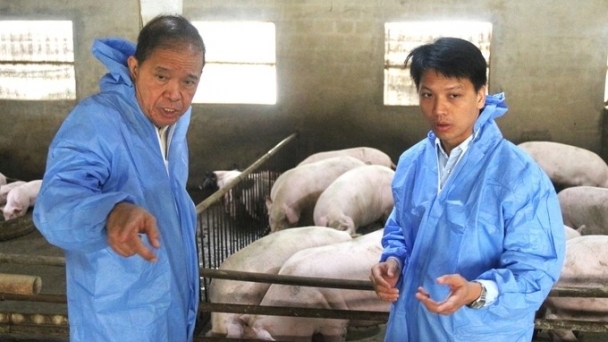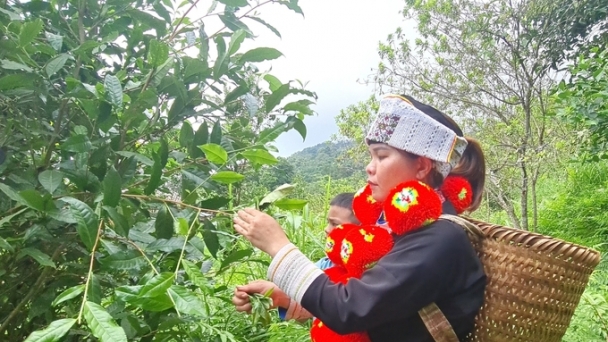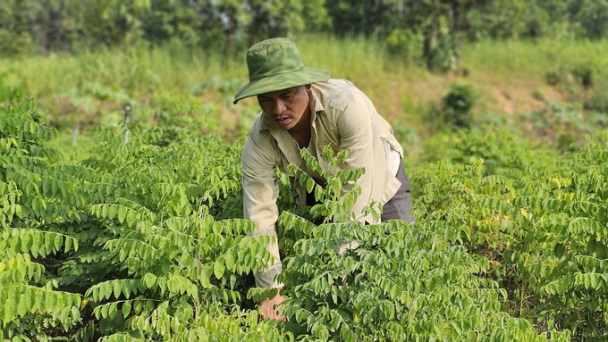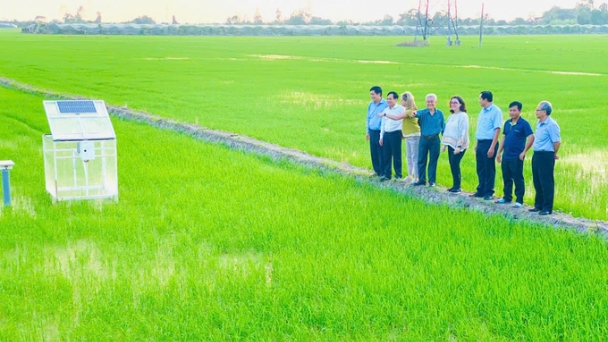December 17, 2024 | 19:00 GMT +7
December 17, 2024 | 19:00 GMT +7
Hotline: 0913.378.918
December 17, 2024 | 19:00 GMT +7
Hotline: 0913.378.918

Xuehua Zhong (right), professor of biology at WashU, studies the evolutionary strategies that plants use to thrive and survive. She frequently studies Arabidopsis thaliana, or thale cress. Credit: Sean Garcia, WashU.
This research could help scientists exploit a plant's existing systems to favor traits that make it more resilient to environmental changes, like heat or drought stress.
The study led by Xuehua Zhong, a professor of biology in Arts & Sciences, was published Nov. 6 in Science Advances.
Zhong's new research focuses on DNA methylation, a normal biological process in living cells wherein small chemical groups called methyl groups are added to DNA. This activity controls which genes are turned on and off, which in turn affects different traits—including how organisms respond to their environments.
Part of this job involves silencing, or turning off, certain snippets of DNA that move around within an organism's genome. These so-called jumping genes, or transposons, can cause damage if not controlled. The entire process is regulated by enzymes, but mammals and plants have developed different enzymes to add methyl groups.
"Mammals only have two major enzymes that add methyl groups in one DNA context, but plants actually have multiple enzymes that do that in three DNA contexts," said Zhong, who is the Dean's Distinguished Professorial Scholar and program director for plant and microbial biosciences at WashU. "This is the focus of our study. The question is—why do plants need extra methylation enzymes?"
Looking forward, Zhong's research could pave the way for innovations in agriculture by improving crop resilience. "Certain genes or combinations of genes are contributing to certain features or traits," Zhong explained. "If we find precisely how they are regulated, then we can find a way to innovate our technology for crop improvement."
The new study is centered around two enzymes specifically found in plants: CMT3 and CMT2. Both enzymes are responsible for adding methyl groups to DNA, but CMT3 specializes in the parts of DNA called the CHG sequences, while CMT2 specializes in different parts called CHH sequences.
Despite their functional differences, both enzymes are a part of the same chromomethylase (CMT) family, which evolved through duplication events that provide plants with additional copies of genetic information.
Using a common model plant called Arabidopsis thaliana, or thale cress, Zhong and her team investigated how these duplicated enzymes evolved different functions over time. They discovered that somewhere along the evolutionary timeline, CMT2 lost its ability to methylate CHG sequences. This is because it's missing an important amino acid called arginine.
"Arginine is special because it has charge," said Jia Gwee, a graduate student in biology and co-first author of the study. "In a cell, it's positively charged and thus can form hydrogen bonds or other chemical interactions with, for example, the negatively charged DNA."
However, CMT2 has a different amino acid—valine. "Valine is not charged, so it is unable to recognize the CHG context like CMT3. That's what we think contributes to the differences between the two enzymes," said Gwee.
To confirm this evolutionary change, the Zhong lab used a mutation to switch arginine back into CMT2. As they expected, CMT2 was able to perform both CHG and CHH methylation. This suggests that CMT2 was originally a duplicate of CMT3, a backup system to help lighten the load as DNA became more complex.
"But instead of simply copying the original function, it developed something new," Zhong explained.
This research also provided insights into CMT2's unique structure. The enzyme has a long, flexible N-terminal that controls its own protein stability. "This is one of the ways plants evolved for genome stability and to fight environmental stresses," Zhong said. This feature may explain why CMT2 evolved in plants growing in such a wide variety of conditions worldwide.
Much of the data for this study came from the 1001 Genomes Project, which aims to discover whole-genome sequence variation in A. thaliana strains from around the globe.
"We're going beyond laboratory conditions," Zhong said. "We're looking at all of the wild accessions in plants using this larger data set."
She believes part of the reason A. thaliana has evolved to thrive despite environmental stresses is because of the diversification that happens during the methylation process, including those jumping transposons. "One jump might help species deal with harsh environmental conditions."
(Phys.org)

(VAN) Positive results in mass vaccination against African swine fever in Vietnam will become important evaluation bases for other countries.

(VAN) Ha Long Bay's 30-year journey as a recognized world natural heritage site is reflected through the numerous achievements in promoting its heritage's values.
/2024/12/16/2402-0-nongnghiep-142359.jpg)
(VAN) 'The agricultural sector is restoring soil nutrients. The fisheries industry has also begun to think about restoring the farming environment,' said Director Tran Dinh Luan.

(VAN) With a passion for sustainable agriculture, many agricultural cooperatives in Tuyen Quang have cultivated long-term farms, thereby establishing strong brand value in the market.

(VAN) The use of technology in forecasting and warning for disaster prevention marks a modern development trend. It enables early action and minimize losses of life and property.

(VAN) The use of organic fertilizers to improve soil nutrition has brought greater value per hectare of farmland for residents in Gia Phu Commune, Bao Thang District, Lao Cai Province.

(VAN) The one million hectares of high-quality rice project in Mekong Delta is both a rice production strategy and an effort to protect and restore rural landscapes.